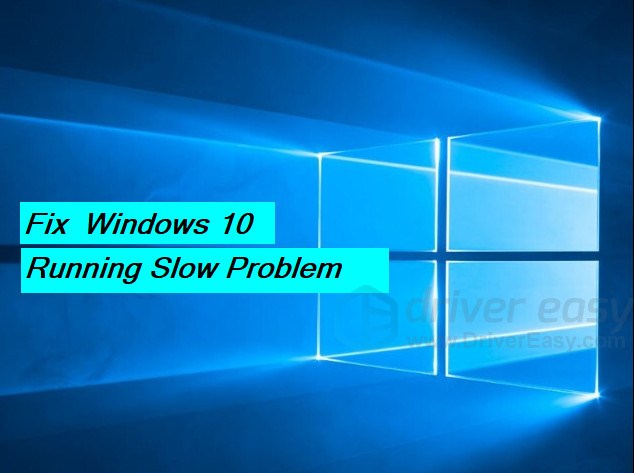
If your Windows 10 run slow or lag, don’t worry. You’re not alone. Many Windows 10 users have reported this issue. You can fix the problem with one of the solutions below.
Seven tips below will improve your Windows 10 performance by resolving the running slow issue. You may not have to try them all. Just work your down at the top of the list until you find the one that works for you.
- Disable Some Useless Programs at Startup
- Update Drivers
- Change Pagefile Size
- Defragment Hard Drives
- Install an External SSD
- Upgrade your RAM
- Remove the Crapware
Tip 1: Disable Some Useless Programs at Startup
For some programs that runs at startup, you don’t use often but they still use big part of the memory. These programs would cause your PC run slowly. In Windows 10, you can disable these startup programs easily. Just follow steps below:
1) Press Ctrl+Shift+Esc keys together to bring up Task Manager dialog box.
2) Go to Startup tab. Select the program that you don’s use often and click on Disable button. Note you only can disable one program at once.
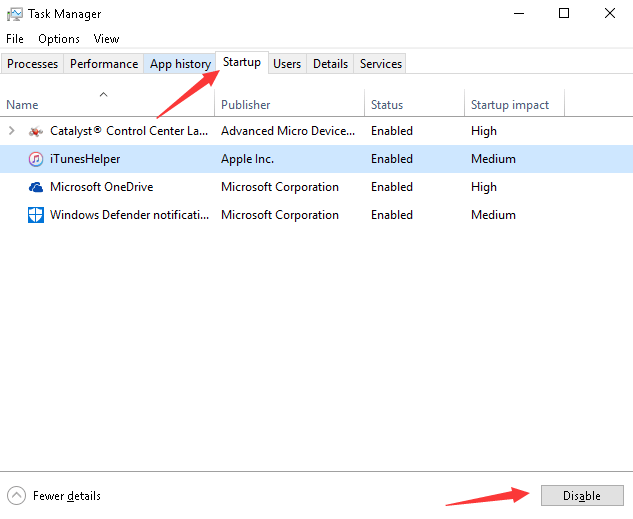
Tip 2: Update Drivers
Your Windows 10 running slow may be caused by driver issues especially graphics card driver issues. To fix the problem, you can try to update the drivers on your computer. If you don’t have the time, patience or computer skills to update drivers manually, you can do it automatically with Driver Easy.
Driver Easy will automatically recognize your system and find the correct drivers for it. You don’t need to know exactly what system your computer is running, you don’t need to risk downloading and installing the wrong driver, and you don’t need to worry about making a mistake when installing.
You can update your drivers automatically with either the FREE or the Pro version of Driver Easy. But with the Pro version it takes just 2 clicks (and you get full support and a 30-day money back guarantee):
1) Download and install Driver Easy.
2) Run Driver Easy and click Scan Now. Driver Easy will then scan your computer and detect any problem drivers.

3) Click the Update button next to the devices to automatically download the correct version of their drivers, and install them one by one (you can do this with the FREE version).
Or click Update All to automatically download and install the correct version of all the drivers that are missing or out of date on your system (this requires the Pro version – you’ll be prompted to upgrade when you click Update All).

Tip 3: Change Pagefile Size
The pagefile is a virtual memory file which is stored in the root folder of your Windows drive. You won’t see this file until you set the system to show hidden files. When your system runs low on RAM (Random Access Memory), it will move some memory to pagefile.sys in order to run smoothly. The file is managed automatically by PC. But you can try changing the size for better PC performance.
1) Type “performance” in the search box at the bottom left of desktop and click on Adjust the appearance and performance of Windows in pop-up menu.
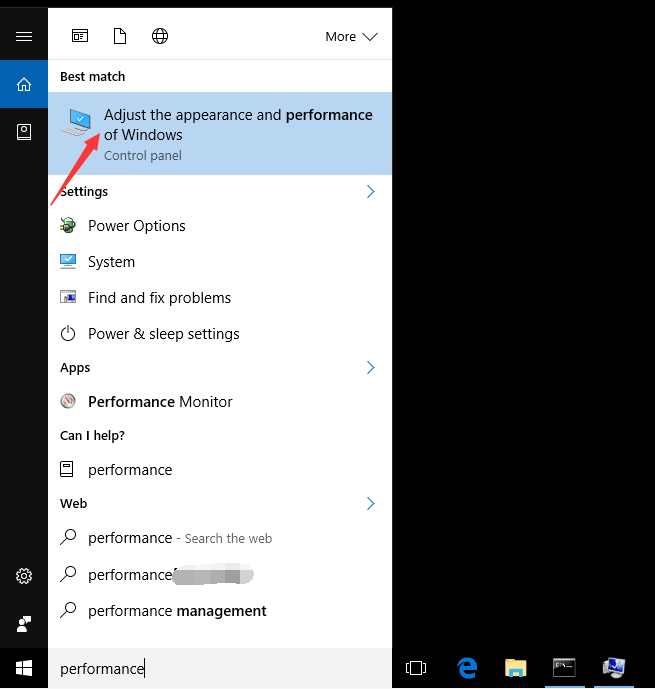
2) Go Advanced tab and click on Change… button.
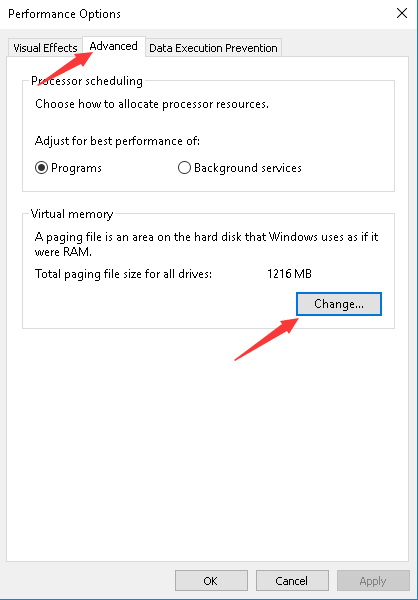
3) Uncheck the box next to Automatically manage paging file size for all drives. Highlight the Drive that your Windows 10 is installed on. Select Custom size then change the Initial size and Maximum size to the Recommended size (In my case, the Recommended size is 1855 MB. Yours might be different.). After that, click Set button.
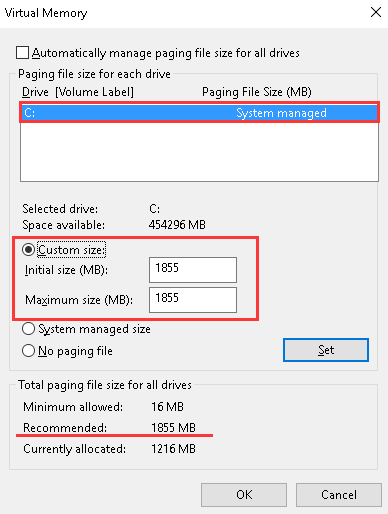
4) Click OK button.
5) Restart your PC for the changes to take effect.
Tip 4: Defragment Hard Drives
The common way to fix Windows 10 running slow is defragment hard drives. If you’re not sure how to deframent hard drives, follow these steps:
1) Type Defragment in the search box, and click on Defragment and Optimize Drives.
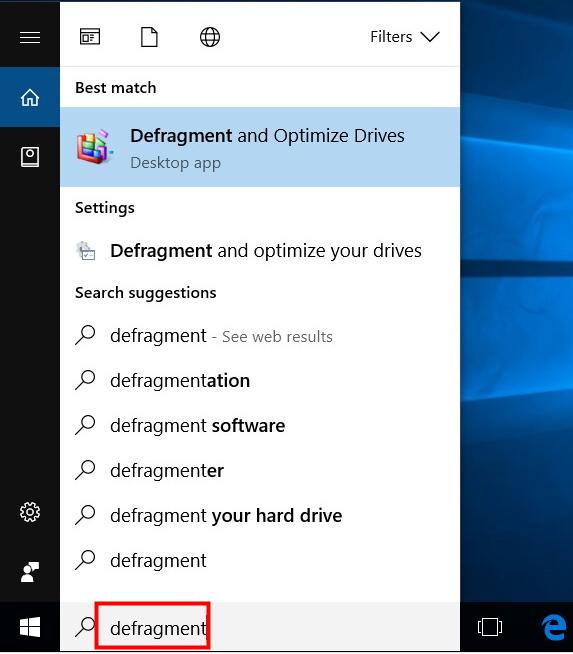
2) Under Status, select the drive you want to defragment. To determine if the drive needs to be optimized, tap or click Analyze.
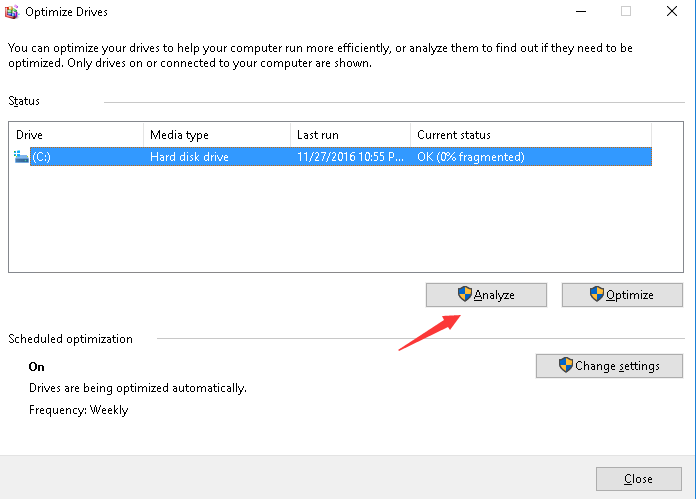
3) Click Optimize.
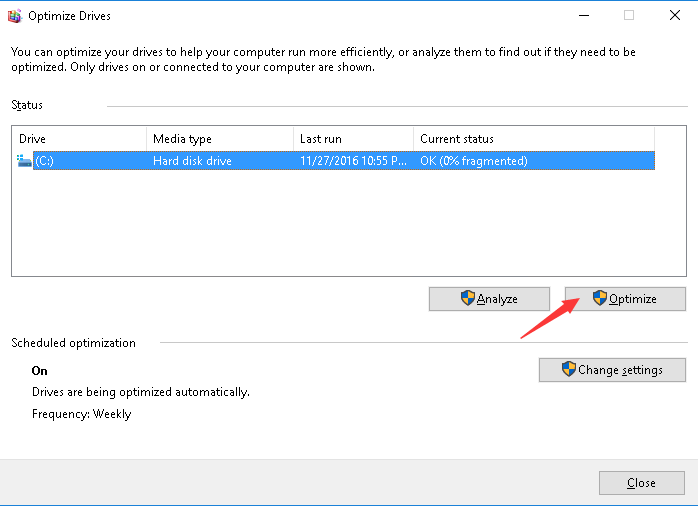
Note: If you have a solid-state drive (SSD) installed in your computer, you should not defragment it, as defragment SSD won’t be helpful for PC performance but may reduce the life of the drive.
Tip 5: Install an External SSD
An external SSD can give a speed boost. If are not sure how to install one, go to the PC store to have it fixed.
Tip 6: Upgrade your RAM
If you need to open a large amount of applications at the same time, maybe it is time to upgrade your RAM. After that, your computer would most probably run faster.
Tip 7: Remove the Crapware
Crapware could be the cause of slow PC performance. Uninstall them and see if your PC runs faster or not.
Hope the you find the tips here helpful. If you have any questions or ideas, please leave your comment below. We’d love to hear of any questions or ideas.





